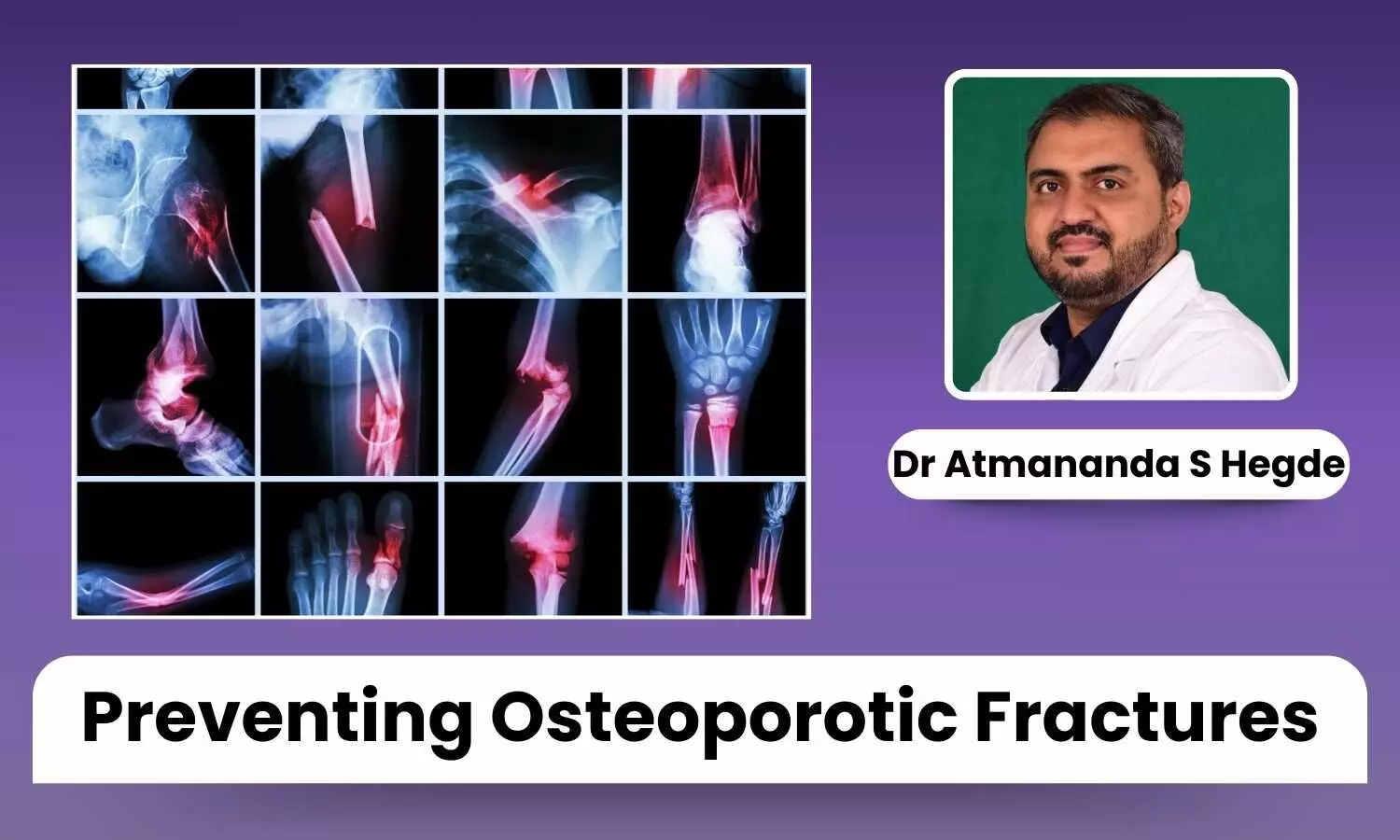Preventing Osteoporotic Fractures: Safety Tips and Fall Prevention Strategies - Dr Atmananda S Hegde

Osteoporosis is a condition characterized by decreased bone density, which significantly increases the risk of fractures. This condition affects millions of people worldwide, particularly postmenopausal women and older adults. Therefore, it is essential to understand how to prevent osteoporotic fractures in order to maintain good health and quality of life.
One of the most effective ways to prevent these fractures is by implementing comprehensive fall prevention strategies. This article aims to provide practical safety tips and strategies that can help reduce the risk of falls and associated fractures. By following these recommendations, individuals can take proactive steps towards maintaining their bone health and overall well-being.
Imagine your bones as a savings account. Throughout your youth, you're making deposits, building up bone density. But as you age, especially after menopause for women, your body starts making more withdrawals than deposits. This is osteoporosis– a condition where bones become porous, fragile, and prone to fractures.
Risk factors include:
- Age (50+)
- Gender (women are at higher risk)
- Family history
- Low body weight
- Smoking and excessive alcohol consumption
- Certain medications
Your home should be a sanctuary, not an obstacle course. Ensure to transform it into a bone-friendly environment:
- Clear pathways of potential trip hazards. That pile of magazines? Time for recycling!
- Install bright, easily accessible lighting. Consider motion-sensor lights for nighttime navigation.
- Install sturdy handrails on both sides of staircases and in bathrooms.
- Use non-slip mats in showers, bathtubs, and on potentially slippery floors.
- Reorganize frequently used items to avoid stretching or climbing.
Falling isn't just embarrassing; it can be downright dangerous. Here's how to keep your feet firmly on the ground:
- Opt for well-fitting, low-heeled shoes with non-slip soles.
- If recommended, use walking aids correctly. A properly adjusted cane or walker can be your best friend.
- Some medications can cause dizziness. Work with your doctor to manage side effects and dosages.
- Regular eye check-ups ensure you can see obstacles before they become problems.
- Take your time when changing positions. Rushing is the fast track to falling.
Exercise isn't just for gym enthusiasts; it's a bone-building necessity. Here's your bone-boosting workout plan:
- Weight-Bearing Wonders: Activities like walking, dancing, or low-impact aerobics help stimulate bone formation.
- Strength Training: Resistance exercises using bands, weights, or your body weight build both muscle and bone.
- Balance Boosters: Yoga or simple standing-on-one-foot exercises improve balance and reduce fall risk.
- Flexibility Factors: Stretching exercises keep you limber and less prone to injury.
Your diet is the building material for your bones. Here's how to eat your way to stronger bones:
- Calcium is King: Dairy products, leafy greens, and fortified foods are excellent sources of calcium.
- The Sunshine Vitamin: Vitamin D helps your body absorb calcium. Get it from sunlight, fatty fish, and fortified foods.
- Protein Power: Adequate protein intake supports bone health. Include lean meats, fish, legumes, and nuts in your diet.
- Moderation Matters: Limit caffeine and alcohol, as they can interfere with calcium absorption.
Your healthcare provider is your ally in the fight against osteoporosis. Regular check-ups should include:
- Bone density scans (DEXA scans) to monitor bone health
- Discussion of risk factors and prevention strategies
- Review of medications and their potential impact on bone health
- Assessment of vitamin D levels and supplementation needs
Preventing osteoporotic fractures isn't about living in fear; it's about living smart. By understanding the risks, creating a safe environment, staying active, eating right, and keeping up with health check-ups, you're building a fortress of bone strength.
Remember, it's never too early or too late to start caring for your bones. Whether you're 25 or 75, the steps you take today can lead to a stronger, more stable tomorrow. So stand tall, walk confidently, and give osteoporosis the slip. Your future self will thank you for the gift of strong, healthy bones!


